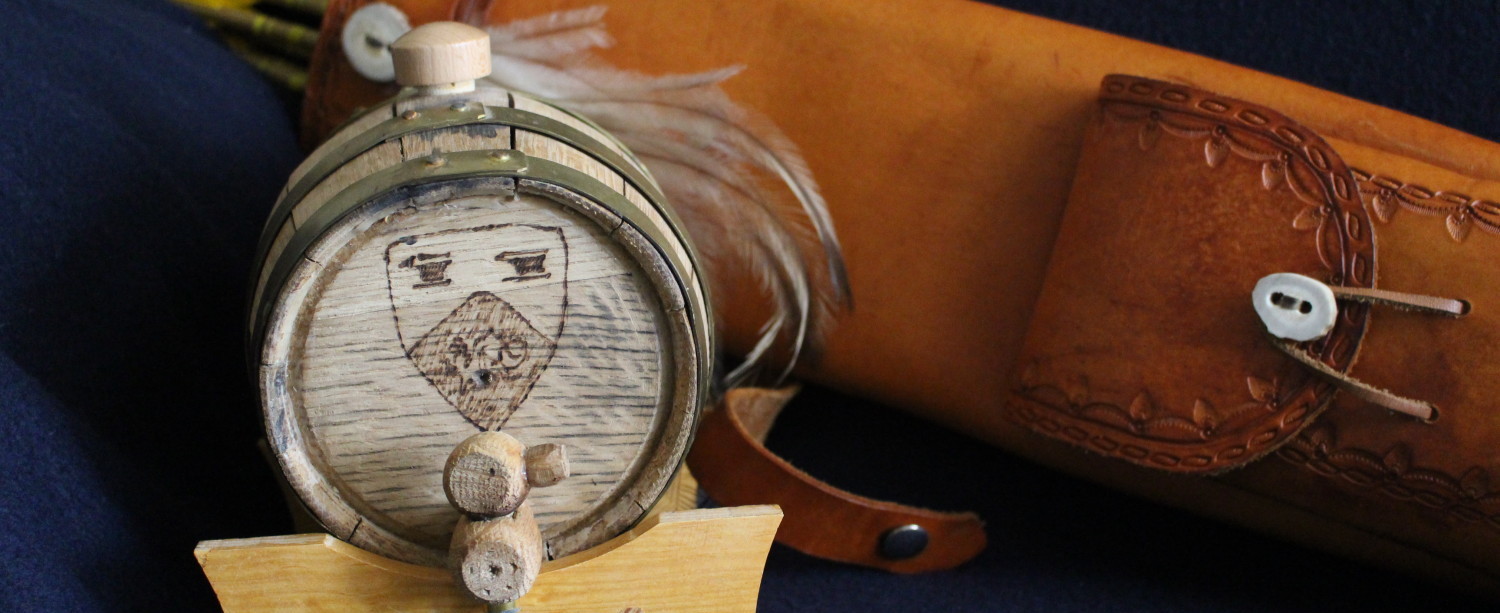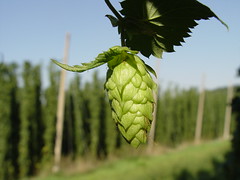Hops and Menopause II
When last we “talked” about hops and menopause, I promised to review some of the science that may explain the reported use of hops as a medicinal agent over the centuries.
Hops are quite chemically complex with a wide variety of bio-active compounds. As mentioned in my first post on this topic, some of these compounds are estrogenic and may have applicability for gynecological maladies. Three of these compounds received increased attention since the late 1990s when research verified their relevance as possible mediators of purported herbal medicinal effects.
- 8-prenylnaringenin (8-PN)
- Xanthohumol (XH)
- Isoxanthohumol (IX – the isomerized version of XH)
Milligan, et al. (1999) is frequently mentioned as the formal validation of 8-prenylnaringenin as a powerful phytoestrogen: more powerful than previously identified plant estrogens. Milligan and his colleagues suggested that 8-PN’s estrogenic effects explain why women working with raw hops experience menstrual disturbances. While 8-PN is a very powerful phytoestrogen, it is still much weaker than the major female sex hormone 17β-estradiol. (Milligan provides an excellent, but short review of the research through 2002 on this topic)
Verification of 8-PN as a powerful phytoestogen stimulated a fair amount of research on its potential effects on the menstrual cycle. Of particular interest is the effects of 8-PN supplements on hot flashes, one of the possible effects of menopause.
Research on the effects of 8-PN on hot flashes has been sparse. One study using an animal analogue (Bowe, et al., 2006) found that tail skin temperature in ovariectomized rats could be reduced by administration of 8-PN. Tail skin temperature after ovariectomy mimics the hot flashes response in humans.
Clinically, a few studies have addressed the response to 8-PN in humans. The early studies tended to be fraught with methodological problems and/or very small sample sizes. However, newer studies have attempted to remedy these problems. One of the better controlled studies by Heyerick, et al (2006) randomly assigned 67 menopausal women to three conditions (placebo, 100µg of 8-PN, & 250µg of 8-PN/day). The women took a modified version of the Kupperman Index, a commonly used assessment of menopause effects (hot flashes, headaches, vaginal dryness, insomnia, sweating, etc.). Baseline, 6-week, and 12-week assessments followed. Without getting into too many gory details, Heyerick et al found significant reductions in Kupperman scores (symptom improvement) in all three groups. However, it appeared that the 100µg group benefited most. The same general result occurred for hot flashes, specifically. This study also suggested that some women may be affected more by the administration of 8-PN compared to other women: an individual difference component that some other studies also found. The fact that increasing the dosage from 100µg to 250µg did not lead to linear effectiveness is problematic. More research is needed according to the authors.
The most recent clinical study on the effectiveness of 8-PN on menopausal effects, specifically hot flashes, was published in 2015. Aghamiri, et al (2015) gave randomly assigned women in early menopause 100µg of active phytoestrogens from hops on a daily basis for 12 weeks. Compared to the placebo group, the treatment group experienced significantly lower scores on a standardized menopause effects scale (The Greene Scale). Hot flashes were particularly reduced over the course of the study in the treatment group.
Taken in toto, studies of the effects of 8-PN on menopausal symptoms in general, and hot flashes specifically, suggest that ingesting this hop derivative may provide a way to relieve “symptoms” without reverting to formal medical hormone therapy. The proponents of herbal medicine hail such findings. However, it seems too early to make claims that this issue is settled. More research needs to be done. Dosage levels need to be understood. Long-term effects need to be assessed. Nevertheless, these results seem to lend some support the long-standing observations regarding the efficacy of hops for some gynecological maladies.
Several issues remain for me to address on this topic, however.
- Can we document observations of the efficacy/effects of hops on these issues to the Middle Ages? Still working on this one. It will be the focus of a future post.
- Someone asked me after reading my first entry on this topic, “Can we just drink beer to alleviate menopausal effects?” It turns out that this question is a very good one and I will address it in my next post. Effects of estrogenic compounds in beer might depend on the answer to the question, “Do you have the guts?” [teaser to be explained in the next post]
- Some folks may wonder if any observations linking hops to menopausal effects could exist in the Middle Ages. After all, the average life-expectancy was quite low in comparison to modern times. Didn’t most women die before reaching the age of menopause? Or, did menopause occur earlier in Medieval days?
It turns out that we have some answers to these questions. I will address them in the next post.
Go to Hops and Menopause Part III
References
Aghamiri, V., et al. (2015). The effect of Hop (Humulus lupulus L.) on early menopausal symptoms and hot flashes: A randomized placebo-controlled trial. Contemporary Therapies in Clinical Practice, XX, 1-6.
Bowe, J., et al. (2006). The hop phytoestrogen, 8-prenylnaringenin, reverses the
ovariectomy-induced rise in skin temperature in an animal model
of menopausal hot flushes. Journal of Endocrinology, 191, 399-405.
Heyerick, A., et al. (2006). A first prospective, randomized, double-blind, placebo-controlled study on the use of a standardized hop extract to alleviate menopausal discomforts. Maturitas, 54, 164-175.
Milligan SR, et al. (1999). Identification of a potent phyto-estrogen in hops (Humulus lupulus L.) and beer. J Clin Endocrinol Metab. 84, 2249-2252.



This series is really interesting, even for a guy who, of course, never experienced hot flashes, menopause, or the menstrual struggles usually known as p.m.s. I mention this last issue because it hasn’t come up specifically in the discussion, and I’m wondering whether, since you mentioned the menstrual irregularities associated with women exposed to raw hops, the potential therapies you discuss might apply there.
I don’t know a lot about PMS and related conditions. I did a little research on it for my lifespan course. If I remember correctly, we still don’t know the exact etiology of PMS aside from the notion that there is some hormonal involvement. Symptomatic treatment seems to be recommended quite frequently, with some pharmacological treatments for some cases (antidepressants, for example). I believe that I read that very low level estrogen administration via transdermal patch is sometimes used. Our modern concept of PMS is fairly new (late 19th century/early 20th century). I’m pretty much out of my knowledge base on this issue.
Pingback:Hops and Menopause III | Casks and Quivers
Pingback:Hops and Menopause – Casks and Quivers